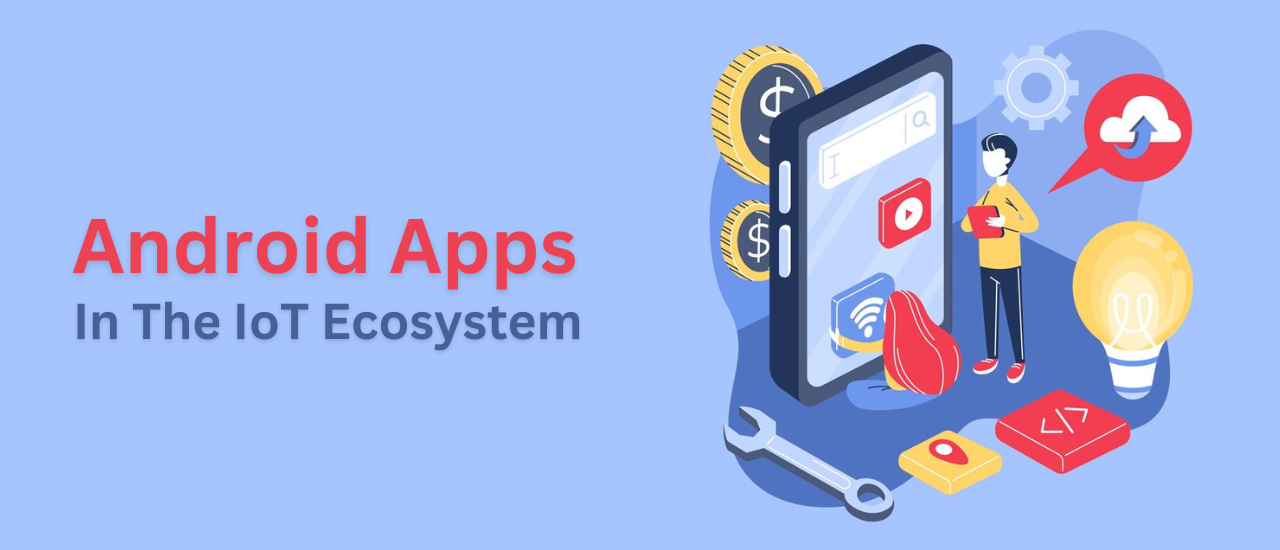Just have a quick read, and you decide!
IoT is not platform-specific. It is a ubiquitous technology that works across iOS and Android operating systems. When designed and implemented thoughtfully, IoT promotes independence, empowerment, and accessibility by enabling individuals to control their environment, access information, and perform daily tasks with greater ease, particularly for those with disabilities or challenges.
In smart homes, IoT-enabled devices can automate tasks like lighting, temperature control, and security systems, allowing individuals to control their living spaces independently, even with mobility impairments.
In personalized assistance, IoT provides personalized reminders, alerts, and assistance based on individual needs, supporting daily routines and promoting self-sufficiency.
In remote access and monitoring, IoT allows for remote access and monitoring of homes and other environments, enabling individuals to live independently while still receiving support when needed.
IoT offers greater control over their environment, routines, and access to information, leading to a sense of empowerment and autonomy. It facilitates communication for individuals with disabilities, enabling them to connect with others and participate in social interactions. It provides access to timely and relevant information – healthcare, education, and other essential services, empowering individuals to make informed decisions and pursue opportunities.
IoT technologies can be adapted to meet the specific needs of individuals with disabilities, enhancing accessibility to homes, workplaces, and other environments. Accessible IoT design should prioritize usability for a wide range of users, including those with disabilities, older adults, and individuals with temporary impairments.
IoT overcomes physical, cognitive, and environmental barriers, making it easier for individuals to participate in daily activities and access opportunities.
Considering this introduction, we can safely say that the Internet of Things is rapidly transforming the way we interact with the world around us, and at the forefront of this revolution lies the ubiquitous Android operating system. With its vast user base and robust development capabilities, Android app development has become accessible for building IoT applications, allowing users to control and monitor connected devices seamlessly through their smartphones.
What to expect from IoT?
Android’s openness allows developers to integrate a diverse range of IoT devices, including smart home appliances, wearables, industrial sensors, and more, into a single, unified app. Android readily supports popular IoT communication protocols like Wi-Fi, Bluetooth, Zigbee, and cellular networks, enabling seamless data exchange between devices and the app. With robust cloud platforms like Google Cloud IoT Core, Android apps can easily connect to centralized data repositories for real-time monitoring and analytics.
Android IoT Apps for Smart Home Management facilitate control of lighting, thermostats, security systems, and appliances through a user-friendly Android app, creating a personalized and convenient smart home experience. Apps IoT Android that monitor health with wearable gadgets track vital signs, activity levels, and sleep patterns using Android wearables, providing valuable health insights and personalized recommendations. In industrial automation, IoT Android apps monitor and manage industrial machinery, production lines, and environmental conditions via an Android app for predictive maintenance and operational efficiency. For retail analytics, Android Apps IoT gathers customer behavior data through IoT sensors in stores, utilizing an Android app to analyze patterns and optimize marketing strategies. Smart City Solutions by IoT offer access to real-time traffic updates, parking availability, and public service information through an Android app, enabling efficient city management.
Middle of the blog, and I am tempted to write something unusual – something which no one had heard earlier. Something that is 100% relevant, futuristic, and serves the purpose of the blog. Plus, something that also helps the reader of this blog.
Android apps for interacting with IoT devices allow users to control devices, view data, and manage settings. They enable users to access real-time data from IoT sensors and devices, providing insights into various processes and conditions. IoT apps facilitate remote monitoring and control of devices, enabling users to manage their smart homes, track assets, or monitor industrial processes from anywhere.
I dug further into my research and found that IoT has not left any industry untouched. It gels up with platforms like IBM Watson, Microsoft Azure, and Blynk. Apps created for Android OS process data from IoT devices, providing users with valuable insights and enabling data-driven decision-making. IoT apps automate tasks and create smart solutions, such as controlling home lighting, adjusting temperature, or managing energy consumption.
But while searching, I found that people are not really aware of the whole picture, and the information that is there is very common. Using interconnected devices at home, smart door locks, in industries to automate various things, lights, temperature controls, security systems, lockers inventory tracking, optimizing processes, fitness trackers, and smartwatches are something we are already aware of. Ok it can automate agriculture and traffic and air quality too.
Diving into Demographics
Japan focuses on integrating IoT with other technologies like AI to achieve a Society 5.0 vision. Singapore is a leader in smart city initiatives, using IoT for various applications like waste management and public services. India has a growing demand for IoT, driven by initiatives like Digital India and Smart Cities, with potential for significant growth in healthcare, agriculture, and manufacturing. Enterprises within Nordic Countries (Denmark, Norway) are known for using IoT technologies, and there is a growing trend of smart devices and connected homes in the Nordic region.
I intentionally wish to skip the trends here as a new and emerging technology, which is being used in developed countries and is gradually being picked up by developing countries will continue trending, not just in this year, but in many more years to come. AI will not just be AI. It will be coupled with the Internet of Things, augmented reality, edge computing, and anything you may think of.
Someone needs to be apprised of what experiments go well with IoT. Having an experience of making virtual software programs like chatbots (AI based) is ok,
But to make applications of smart cities, smart homes, industries, healthcare, agriculture – they need to be aware of how things work manually. They also should know how to work on a dashboard and generate reports based on some data. Reading and interpreting reports and then doing the next step.
How, what, when, and why – of picking IoT App Development Companies
Implement robust authentication mechanisms, such as strong passwords, multi-factor authentication, and biometric authentication (fingerprint, facial recognition), to prevent unauthorized access to the app and connected IoT devices. Store sensitive data like passwords and API keys securely, using encryption and secure storage mechanisms provided by the Android platform.
Data is always private and sensitive, and safeguarding it becomes a responsibility of the company who makes the software for people to use. This is called data at rest encryption. Also data in transit encryption by making use of secure communication protocols like TLS/SSL to encrypt data transmitted between the app and the IoT devices or cloud services, preventing eavesdropping and data interception is a part of building a secure IoT application.
Implementing secure mechanisms for updating the firmware of IoT devices, ensuring that updates are verified and authenticated to prevent malicious firmware from being installed.
And also regularly update the app and connected IoT devices with the latest security patches to address known vulnerabilities.
Network must be configured securely using strong encryption protocols (e.g., WPA2/WPA3), and implementing firewalls and intrusion detection systems to protect the network from unauthorized access. Make use of secure communication protocols (e.g., MQTT over TLS) for communication between the app and IoT devices.
Implement security measures on the IoT device, such as disabling unnecessary services, hardening the operating system, and using security tools to monitor and protect the device. Ensure that the IoT device boots securely, preventing malicious code from being loaded during the boot process.
Make cloud APIs to control access to cloud services. Store data securely in the cloud, using encryption and access control mechanisms to protect sensitive data.
Grant users and applications only the necessary permissions and access rights, minimizing the potential impact of a security breach. Conduct regular security audits and penetration testing to identify and address vulnerabilities in the app and IoT ecosystem. Educate users about security best practices, such as changing default passwords and being aware of phishing attempts.
Conclusive
According to Statista, the global IoT market is projected to reach $1.3 trillion by 2025, highlighting the significant growth potential for Android IoT application development. A survey by Google Developer Insights indicates that Android is the dominant operating system for IoT applications, with a market share in both consumer and industrial sectors. With its extensive capabilities and vast user base, Android is rapidly becoming the primary platform for developing intuitive and accessible IoT applications. As the IoT ecosystem evolves, Android app development companies will create innovative solutions that seamlessly integrate connected devices into our daily lives.






